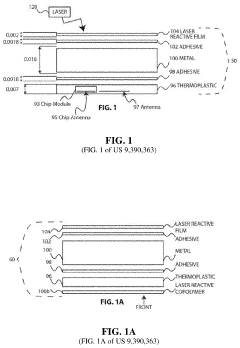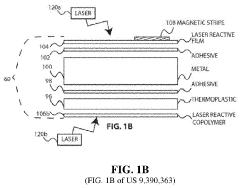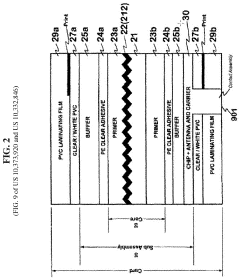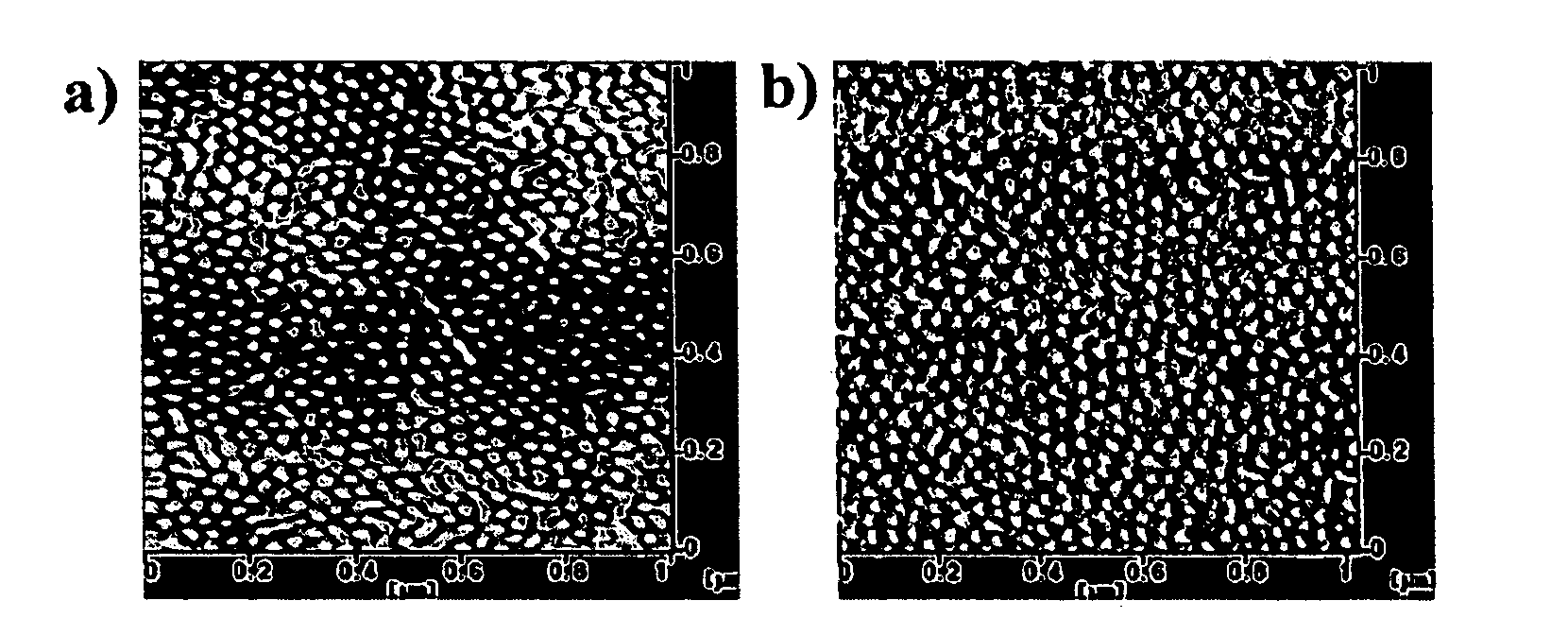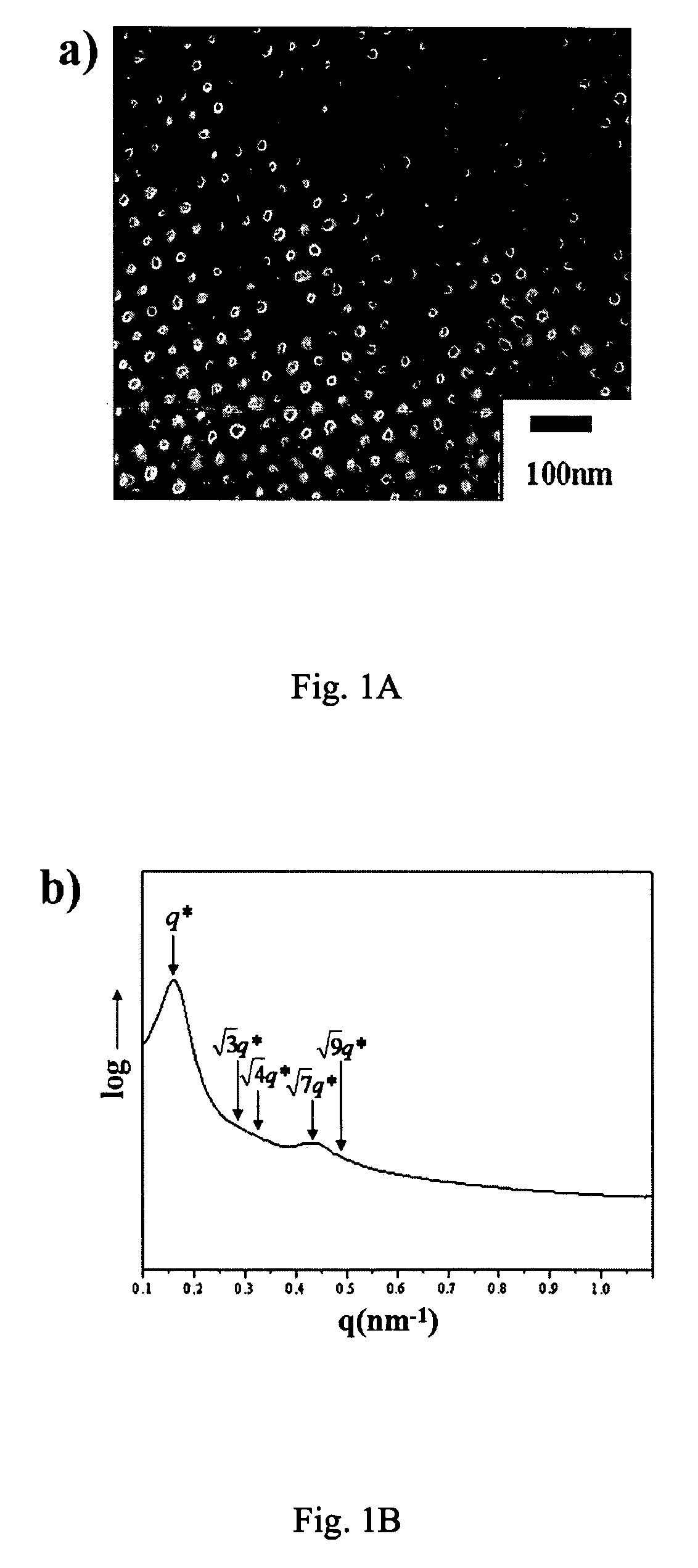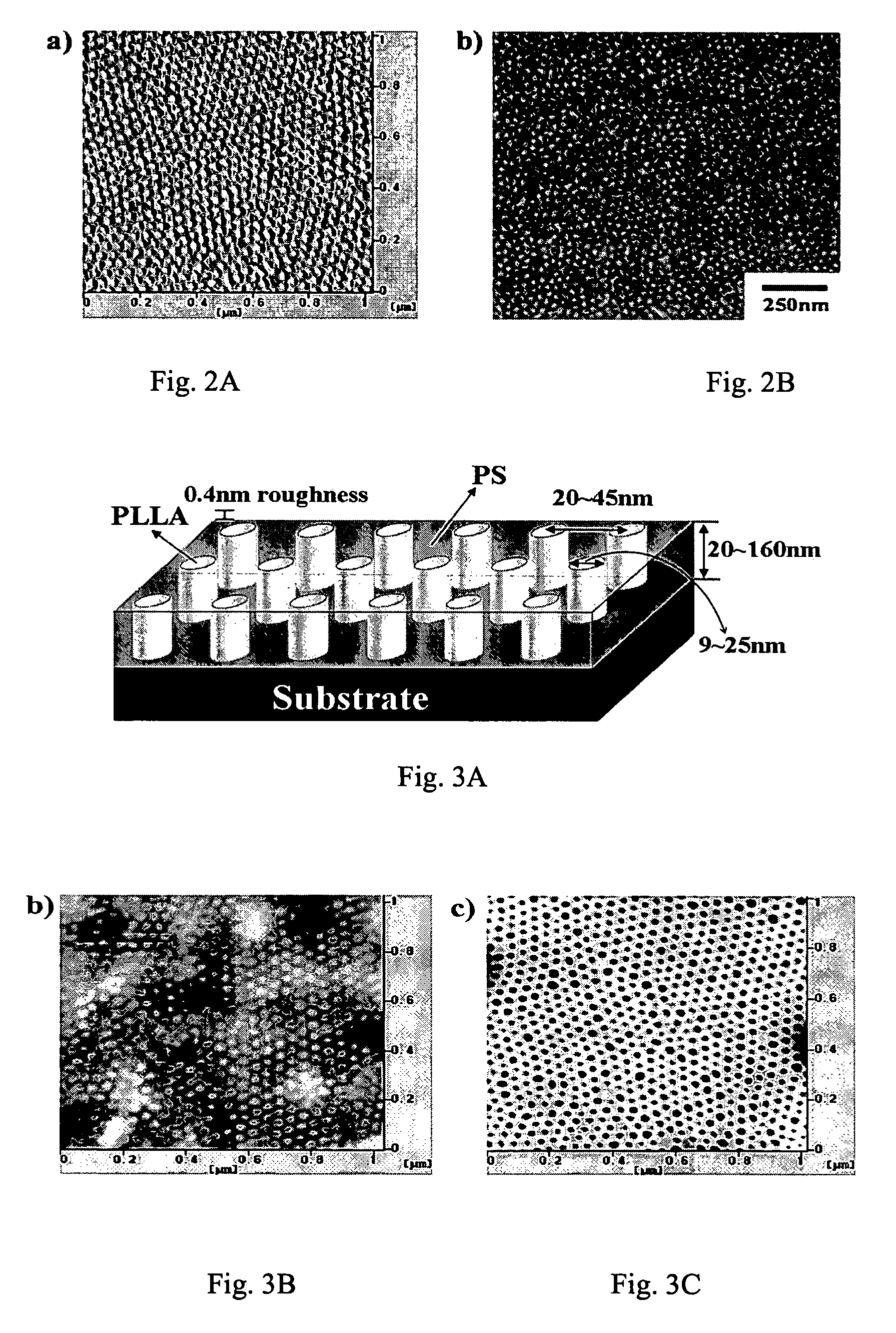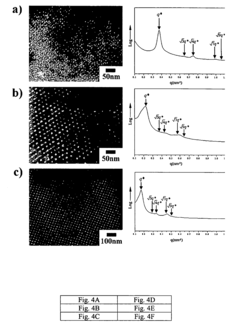How to Create PLA Prototypes with High Precision?
JUN 25, 20259 MIN READ
Generate Your Research Report Instantly with AI Agent
Patsnap Eureka helps you evaluate technical feasibility & market potential.
PLA Prototyping Background and Objectives
Polylactic acid (PLA) prototyping has emerged as a crucial technology in the field of rapid manufacturing and product development. The evolution of PLA prototyping can be traced back to the early 1990s when biodegradable polymers gained attention for their environmental benefits. Over the years, the technology has advanced significantly, driven by the growing demand for sustainable and eco-friendly manufacturing processes.
The primary objective of high-precision PLA prototyping is to create accurate, detailed, and functional prototypes that closely resemble the final product. This technology aims to bridge the gap between conceptual design and mass production, enabling designers and engineers to validate their ideas quickly and cost-effectively. As the industry progresses, there is an increasing focus on enhancing the precision, surface finish, and mechanical properties of PLA prototypes.
The technological trend in PLA prototyping is moving towards multi-material printing, improved layer resolution, and advanced post-processing techniques. These advancements are crucial for achieving higher precision and expanding the application scope of PLA prototypes across various industries, including automotive, aerospace, consumer electronics, and medical devices.
One of the key drivers behind the development of high-precision PLA prototyping is the need for rapid iteration in product development cycles. As time-to-market becomes increasingly critical, manufacturers are seeking ways to accelerate their prototyping processes without compromising on quality or accuracy. This has led to the integration of advanced software tools, machine learning algorithms, and real-time monitoring systems in PLA prototyping equipment.
Another significant trend is the focus on sustainability and circular economy principles. PLA, being a biodegradable material derived from renewable resources, aligns well with these objectives. However, challenges remain in optimizing the material properties and processing techniques to match the performance of traditional petroleum-based plastics in certain applications.
The future of high-precision PLA prototyping is likely to involve the development of new PLA blends and composites that offer enhanced mechanical properties and thermal stability. Additionally, there is a growing interest in combining PLA prototyping with other advanced manufacturing techniques, such as hybrid additive-subtractive processes, to achieve even higher levels of precision and functionality.
As the technology continues to evolve, researchers and industry professionals are working towards overcoming current limitations, such as warping, layer adhesion issues, and limited heat resistance. The ultimate goal is to establish PLA prototyping as a viable alternative to traditional prototyping methods across a broader range of applications, while maintaining its eco-friendly attributes and cost-effectiveness.
The primary objective of high-precision PLA prototyping is to create accurate, detailed, and functional prototypes that closely resemble the final product. This technology aims to bridge the gap between conceptual design and mass production, enabling designers and engineers to validate their ideas quickly and cost-effectively. As the industry progresses, there is an increasing focus on enhancing the precision, surface finish, and mechanical properties of PLA prototypes.
The technological trend in PLA prototyping is moving towards multi-material printing, improved layer resolution, and advanced post-processing techniques. These advancements are crucial for achieving higher precision and expanding the application scope of PLA prototypes across various industries, including automotive, aerospace, consumer electronics, and medical devices.
One of the key drivers behind the development of high-precision PLA prototyping is the need for rapid iteration in product development cycles. As time-to-market becomes increasingly critical, manufacturers are seeking ways to accelerate their prototyping processes without compromising on quality or accuracy. This has led to the integration of advanced software tools, machine learning algorithms, and real-time monitoring systems in PLA prototyping equipment.
Another significant trend is the focus on sustainability and circular economy principles. PLA, being a biodegradable material derived from renewable resources, aligns well with these objectives. However, challenges remain in optimizing the material properties and processing techniques to match the performance of traditional petroleum-based plastics in certain applications.
The future of high-precision PLA prototyping is likely to involve the development of new PLA blends and composites that offer enhanced mechanical properties and thermal stability. Additionally, there is a growing interest in combining PLA prototyping with other advanced manufacturing techniques, such as hybrid additive-subtractive processes, to achieve even higher levels of precision and functionality.
As the technology continues to evolve, researchers and industry professionals are working towards overcoming current limitations, such as warping, layer adhesion issues, and limited heat resistance. The ultimate goal is to establish PLA prototyping as a viable alternative to traditional prototyping methods across a broader range of applications, while maintaining its eco-friendly attributes and cost-effectiveness.
Market Analysis for High-Precision PLA Prototypes
The market for high-precision PLA prototypes has experienced significant growth in recent years, driven by the increasing demand for rapid prototyping and additive manufacturing across various industries. The global 3D printing market, which encompasses PLA prototyping, is projected to reach $63.46 billion by 2028, with a compound annual growth rate (CAGR) of 29.48% from 2021 to 2028.
The automotive and aerospace industries are major contributors to this market growth, as they require high-precision prototypes for testing and development of complex components. The medical and healthcare sectors also show substantial demand, particularly in the production of customized medical devices and anatomical models for surgical planning.
Consumer electronics and industrial manufacturing sectors are increasingly adopting high-precision PLA prototyping for product design and development. This trend is fueled by the need for faster time-to-market and cost-effective product iterations.
The market for high-precision PLA prototypes is characterized by a growing emphasis on sustainability and eco-friendly materials. PLA, being biodegradable and derived from renewable resources, aligns well with this trend, further driving its adoption in various applications.
Geographically, North America and Europe lead the market for high-precision PLA prototypes, owing to their advanced manufacturing capabilities and strong presence of key industry players. However, the Asia-Pacific region is expected to witness the highest growth rate in the coming years, primarily due to rapid industrialization and increasing investments in additive manufacturing technologies.
The market is also seeing a shift towards more specialized and high-performance PLA materials. These advanced formulations offer enhanced mechanical properties, temperature resistance, and surface finish, expanding the potential applications of PLA in high-precision prototyping.
Key challenges in the market include the need for improved printing speed without compromising precision, and the development of PLA materials with properties comparable to engineering plastics. Addressing these challenges could potentially unlock new market segments and applications for high-precision PLA prototypes.
In conclusion, the market for high-precision PLA prototypes shows strong growth potential, driven by technological advancements, increasing adoption across industries, and the push for sustainable manufacturing solutions. As the technology continues to evolve, it is expected to play an increasingly crucial role in product development and manufacturing processes across various sectors.
The automotive and aerospace industries are major contributors to this market growth, as they require high-precision prototypes for testing and development of complex components. The medical and healthcare sectors also show substantial demand, particularly in the production of customized medical devices and anatomical models for surgical planning.
Consumer electronics and industrial manufacturing sectors are increasingly adopting high-precision PLA prototyping for product design and development. This trend is fueled by the need for faster time-to-market and cost-effective product iterations.
The market for high-precision PLA prototypes is characterized by a growing emphasis on sustainability and eco-friendly materials. PLA, being biodegradable and derived from renewable resources, aligns well with this trend, further driving its adoption in various applications.
Geographically, North America and Europe lead the market for high-precision PLA prototypes, owing to their advanced manufacturing capabilities and strong presence of key industry players. However, the Asia-Pacific region is expected to witness the highest growth rate in the coming years, primarily due to rapid industrialization and increasing investments in additive manufacturing technologies.
The market is also seeing a shift towards more specialized and high-performance PLA materials. These advanced formulations offer enhanced mechanical properties, temperature resistance, and surface finish, expanding the potential applications of PLA in high-precision prototyping.
Key challenges in the market include the need for improved printing speed without compromising precision, and the development of PLA materials with properties comparable to engineering plastics. Addressing these challenges could potentially unlock new market segments and applications for high-precision PLA prototypes.
In conclusion, the market for high-precision PLA prototypes shows strong growth potential, driven by technological advancements, increasing adoption across industries, and the push for sustainable manufacturing solutions. As the technology continues to evolve, it is expected to play an increasingly crucial role in product development and manufacturing processes across various sectors.
Current Challenges in PLA Precision Prototyping
Creating high-precision PLA prototypes presents several significant challenges that researchers and manufacturers must overcome. One of the primary obstacles is the inherent material properties of PLA (Polylactic Acid), which can affect the dimensional accuracy and surface finish of the final prototype.
PLA has a tendency to warp and shrink during cooling, which can lead to deformation and inaccuracies in the printed parts. This is particularly problematic for large or complex geometries, where uneven cooling rates across different sections of the prototype can result in internal stresses and distortions.
Another challenge lies in achieving consistent layer adhesion and minimizing layer lines. While PLA is generally easy to print, obtaining a smooth surface finish and strong interlayer bonding requires precise control over printing parameters such as temperature, speed, and layer height. Balancing these factors to achieve both high precision and structural integrity can be difficult.
The resolution limitations of current FDM (Fused Deposition Modeling) printers also pose a challenge for high-precision PLA prototyping. Most consumer-grade 3D printers have nozzle diameters ranging from 0.2mm to 0.4mm, which limits the minimum feature size and detail that can be accurately reproduced. Achieving finer details often requires post-processing techniques, which can introduce additional complexities and potential for error.
Environmental factors such as ambient temperature, humidity, and air currents can significantly impact the quality and precision of PLA prints. Maintaining a controlled printing environment is crucial but can be challenging, especially in non-industrial settings.
The optimization of slicing parameters presents another hurdle. Factors such as infill patterns, shell thickness, and support structures must be carefully calibrated to achieve the desired balance between precision, strength, and print time. This often requires extensive experimentation and expertise.
Lastly, the challenge of repeatability and consistency across multiple prints or different printers is significant. Achieving uniform results, especially when scaling up production or transferring designs between different machines, requires robust processes and quality control measures.
Addressing these challenges requires a multifaceted approach, combining advancements in material science, printer hardware, software algorithms, and printing techniques. As the field progresses, researchers and manufacturers continue to develop innovative solutions to push the boundaries of precision in PLA prototyping.
PLA has a tendency to warp and shrink during cooling, which can lead to deformation and inaccuracies in the printed parts. This is particularly problematic for large or complex geometries, where uneven cooling rates across different sections of the prototype can result in internal stresses and distortions.
Another challenge lies in achieving consistent layer adhesion and minimizing layer lines. While PLA is generally easy to print, obtaining a smooth surface finish and strong interlayer bonding requires precise control over printing parameters such as temperature, speed, and layer height. Balancing these factors to achieve both high precision and structural integrity can be difficult.
The resolution limitations of current FDM (Fused Deposition Modeling) printers also pose a challenge for high-precision PLA prototyping. Most consumer-grade 3D printers have nozzle diameters ranging from 0.2mm to 0.4mm, which limits the minimum feature size and detail that can be accurately reproduced. Achieving finer details often requires post-processing techniques, which can introduce additional complexities and potential for error.
Environmental factors such as ambient temperature, humidity, and air currents can significantly impact the quality and precision of PLA prints. Maintaining a controlled printing environment is crucial but can be challenging, especially in non-industrial settings.
The optimization of slicing parameters presents another hurdle. Factors such as infill patterns, shell thickness, and support structures must be carefully calibrated to achieve the desired balance between precision, strength, and print time. This often requires extensive experimentation and expertise.
Lastly, the challenge of repeatability and consistency across multiple prints or different printers is significant. Achieving uniform results, especially when scaling up production or transferring designs between different machines, requires robust processes and quality control measures.
Addressing these challenges requires a multifaceted approach, combining advancements in material science, printer hardware, software algorithms, and printing techniques. As the field progresses, researchers and manufacturers continue to develop innovative solutions to push the boundaries of precision in PLA prototyping.
Existing High-Precision PLA Prototyping Methods
01 3D printing techniques for PLA prototypes
Advanced 3D printing techniques are employed to create precise PLA prototypes. These methods allow for the fabrication of complex geometries with high accuracy, enabling rapid prototyping and iterative design processes. The precision of PLA prototypes can be enhanced through optimized printing parameters and post-processing techniques.- 3D printing techniques for PLA prototypes: Advanced 3D printing techniques are employed to create precise PLA prototypes. These methods involve layer-by-layer deposition of PLA material, allowing for complex geometries and high-resolution details. The process can be optimized for various parameters such as layer height, print speed, and temperature to achieve the desired precision.
- Surface finishing methods for PLA prototypes: Various surface finishing techniques are applied to enhance the precision of PLA prototypes. These may include chemical treatments, mechanical polishing, or post-processing methods to improve surface smoothness and dimensional accuracy. Such techniques can significantly refine the final appearance and functionality of the prototypes.
- Precision measurement and quality control: Advanced measurement and quality control systems are implemented to ensure high precision in PLA prototypes. These may involve 3D scanning, computer vision, or other non-destructive testing methods to verify dimensional accuracy and detect any deviations from the intended design. Such systems help maintain consistency and reliability in prototype production.
- Material optimization for PLA prototypes: Research into PLA material properties and formulations aims to improve the precision of prototypes. This includes developing PLA blends with enhanced mechanical properties, reduced shrinkage, and improved thermal stability. Optimized materials can lead to more accurate and stable prototypes, especially for applications requiring tight tolerances.
- Computer-aided design and simulation for PLA prototyping: Advanced CAD software and simulation tools are utilized to improve the precision of PLA prototypes. These tools allow for detailed design optimization, stress analysis, and prediction of material behavior during the prototyping process. By simulating the manufacturing process and product performance, designers can refine their designs for improved precision before physical production.
02 Material characterization and selection for PLA prototypes
Careful selection and characterization of PLA materials are crucial for achieving high precision in prototypes. This involves analyzing the mechanical properties, thermal behavior, and molecular weight distribution of different PLA grades. Advanced characterization techniques help in optimizing material selection for specific prototype applications.Expand Specific Solutions03 Precision measurement and quality control for PLA prototypes
Implementing advanced measurement techniques and quality control processes ensures the precision of PLA prototypes. This includes using high-resolution imaging, laser scanning, and coordinate measuring machines to verify dimensional accuracy. Statistical process control methods are applied to maintain consistency in prototype production.Expand Specific Solutions04 Surface treatment and finishing of PLA prototypes
Various surface treatment and finishing techniques are employed to enhance the precision and surface quality of PLA prototypes. These may include chemical treatments, mechanical polishing, and coating applications. Such processes improve the dimensional stability and surface finish of the prototypes, leading to higher overall precision.Expand Specific Solutions05 Design optimization for precision PLA prototyping
Utilizing advanced design optimization techniques and software tools to improve the precision of PLA prototypes. This involves finite element analysis, topology optimization, and generative design approaches to create prototypes that meet specific performance and precision requirements while considering the unique properties of PLA materials.Expand Specific Solutions
Key Players in High-Precision PLA Prototyping
The market for high-precision PLA prototyping is in a growth phase, driven by increasing demand for rapid prototyping in various industries. The global 3D printing market, which includes PLA prototyping, is expected to reach $63.46 billion by 2028. Technologically, PLA prototyping is advancing rapidly, with companies like Nexa3D, Inc. and NatureWorks LLC leading innovations in materials and processes. Established players such as Evonik Operations GmbH and Ricoh Co., Ltd. are investing in research to improve precision and speed. Academic institutions like the University of Washington and Guangdong University of Technology are contributing to technological advancements, while industrial giants like General Motors LLC are exploring applications in manufacturing. The competitive landscape is diverse, with a mix of specialized 3D printing companies, material suppliers, and end-users driving innovation.
Nexa3D, Inc.
Technical Solution: Nexa3D has developed a proprietary Lubricant Sublayer Photo-curing (LSPc) technology for high-precision PLA prototyping. This process involves a self-lubricating sublayer that enables continuous printing at high speeds. The technology uses a high-power LED light engine to cure photopolymer resins layer by layer, achieving print speeds up to 1cm per minute in Z-height. Nexa3D's NXE400 printer, equipped with this technology, can produce highly detailed PLA prototypes with layer thicknesses as low as 20 microns, ensuring excellent surface finish and dimensional accuracy.
Strengths: Ultra-fast printing speeds, high precision, and excellent surface finish. Weaknesses: Limited to photopolymer resins, potentially higher cost compared to traditional FDM printers.
NatureWorks LLC
Technical Solution: NatureWorks has developed Ingeo, a biopolymer PLA material specifically designed for high-precision prototyping. Their technology focuses on optimizing the molecular weight distribution and crystallinity of PLA to enhance its printability and mechanical properties. They have also developed a proprietary annealing process that improves the heat resistance and dimensional stability of PLA prototypes. NatureWorks' PLA grades for 3D printing offer excellent resolution, reduced warping, and improved layer adhesion, making them ideal for creating high-precision prototypes.
Strengths: Eco-friendly material, excellent print quality, and improved heat resistance. Weaknesses: May require specialized printing equipment for optimal results, potentially higher material cost compared to standard PLA.
Innovative Techniques for PLA Precision Enhancement
RFID-enabled metal transaction cards with foil, special texture, color and carbon fiber
PatentInactiveUS20210174159A1
Innovation
- The development of RFID-enabled metal transaction cards with a composite layer of carbon fiber and a micro-slit metal layer, where a hologram or diffraction grating is assembled on the metal layer with a micro-slit, and a conductive foil is applied to act as an antenna and coupling frame, ensuring radio frequency reception and transmission while camouflaging the slit.
Nanopatterned templates from oriented degradable diblock copolymer thin films
PatentInactiveUS7632544B2
Innovation
- The method involves using degradable diblock copolymers, specifically poly(styrene)-b-poly(L-lactide) (PS-PLLA), to form oriented microdomains through spin coating and subsequent hydrolysis, resulting in large-scale, well-oriented nanochannel arrays with tunable film thickness and smooth surface topography.
Environmental Impact of PLA Prototyping
The environmental impact of PLA prototyping is a crucial consideration in the context of creating high-precision prototypes. PLA (Polylactic Acid) is a biodegradable thermoplastic derived from renewable resources such as corn starch or sugarcane, making it an attractive option for environmentally conscious manufacturing processes.
One of the primary environmental benefits of PLA prototyping is its lower carbon footprint compared to traditional petroleum-based plastics. The production of PLA requires less energy and generates fewer greenhouse gas emissions, contributing to a reduced overall environmental impact. Additionally, PLA's biodegradability offers a potential solution to the growing problem of plastic waste accumulation in landfills and oceans.
However, the environmental advantages of PLA are not without caveats. The biodegradation process of PLA requires specific conditions, typically found in industrial composting facilities. In standard landfill conditions, PLA may not degrade significantly faster than conventional plastics. This highlights the importance of proper disposal and recycling infrastructure to fully realize the environmental benefits of PLA prototyping.
The use of PLA in high-precision prototyping also raises questions about material efficiency and waste generation. While PLA itself is considered more environmentally friendly, the prototyping process can still produce waste in the form of failed prints, support structures, and post-processing debris. Implementing efficient design practices and optimizing print settings can help minimize waste and improve the overall environmental performance of PLA prototyping.
Water usage is another environmental factor to consider in PLA production. The cultivation of crops used for PLA, such as corn, can be water-intensive. However, advancements in agricultural practices and the development of more drought-resistant crop varieties are helping to mitigate this concern.
The end-of-life management of PLA prototypes is a critical aspect of their environmental impact. While PLA is compostable under the right conditions, it is essential to establish proper collection and processing systems to ensure that PLA waste is directed to appropriate facilities rather than ending up in conventional waste streams.
In conclusion, while PLA prototyping offers significant environmental advantages over traditional plastic materials, its overall impact depends on various factors throughout its lifecycle. Continued research and development in PLA production, processing, and disposal technologies will be crucial in maximizing the environmental benefits of this material in high-precision prototyping applications.
One of the primary environmental benefits of PLA prototyping is its lower carbon footprint compared to traditional petroleum-based plastics. The production of PLA requires less energy and generates fewer greenhouse gas emissions, contributing to a reduced overall environmental impact. Additionally, PLA's biodegradability offers a potential solution to the growing problem of plastic waste accumulation in landfills and oceans.
However, the environmental advantages of PLA are not without caveats. The biodegradation process of PLA requires specific conditions, typically found in industrial composting facilities. In standard landfill conditions, PLA may not degrade significantly faster than conventional plastics. This highlights the importance of proper disposal and recycling infrastructure to fully realize the environmental benefits of PLA prototyping.
The use of PLA in high-precision prototyping also raises questions about material efficiency and waste generation. While PLA itself is considered more environmentally friendly, the prototyping process can still produce waste in the form of failed prints, support structures, and post-processing debris. Implementing efficient design practices and optimizing print settings can help minimize waste and improve the overall environmental performance of PLA prototyping.
Water usage is another environmental factor to consider in PLA production. The cultivation of crops used for PLA, such as corn, can be water-intensive. However, advancements in agricultural practices and the development of more drought-resistant crop varieties are helping to mitigate this concern.
The end-of-life management of PLA prototypes is a critical aspect of their environmental impact. While PLA is compostable under the right conditions, it is essential to establish proper collection and processing systems to ensure that PLA waste is directed to appropriate facilities rather than ending up in conventional waste streams.
In conclusion, while PLA prototyping offers significant environmental advantages over traditional plastic materials, its overall impact depends on various factors throughout its lifecycle. Continued research and development in PLA production, processing, and disposal technologies will be crucial in maximizing the environmental benefits of this material in high-precision prototyping applications.
Quality Control in PLA Precision Prototyping
Quality control is a critical aspect of creating high-precision PLA prototypes. Implementing robust quality control measures ensures that the final product meets the required specifications and maintains consistency across multiple iterations. The process begins with careful material selection, as the quality of the PLA filament significantly impacts the precision of the printed prototype. Manufacturers should source high-grade PLA filaments with consistent diameter and minimal impurities to achieve optimal results.
Throughout the printing process, several key parameters must be closely monitored and controlled. Temperature management is crucial, as fluctuations in nozzle and bed temperatures can lead to inconsistencies in layer adhesion and overall dimensional accuracy. Implementing precise temperature control systems and regular calibration of heating elements can help maintain stable thermal conditions. Print speed and extrusion rates also play a vital role in achieving high precision. Slower print speeds generally result in better accuracy but must be balanced with production efficiency.
Environmental factors such as ambient temperature, humidity, and air circulation can significantly affect the quality of PLA prototypes. Establishing a controlled printing environment with stable temperature and humidity levels helps minimize warping, layer separation, and other defects. Additionally, implementing proper ventilation systems can reduce the accumulation of harmful fumes and particulates, ensuring a safer working environment and potentially improving print quality.
Post-processing techniques are essential for achieving the desired level of precision in PLA prototypes. These may include careful removal of support structures, sanding to smooth surfaces, and applying finishing treatments to enhance aesthetics and functionality. Developing standardized post-processing procedures and training operators in these techniques can lead to more consistent and high-quality results.
Implementing a comprehensive quality assurance system is crucial for maintaining high precision in PLA prototyping. This system should include regular calibration of 3D printers, routine maintenance of equipment, and thorough inspection of finished prototypes. Utilizing advanced measurement tools such as 3D scanners and coordinate measuring machines (CMMs) allows for precise comparison between the printed prototype and the original CAD model, ensuring dimensional accuracy and identifying any deviations.
Throughout the printing process, several key parameters must be closely monitored and controlled. Temperature management is crucial, as fluctuations in nozzle and bed temperatures can lead to inconsistencies in layer adhesion and overall dimensional accuracy. Implementing precise temperature control systems and regular calibration of heating elements can help maintain stable thermal conditions. Print speed and extrusion rates also play a vital role in achieving high precision. Slower print speeds generally result in better accuracy but must be balanced with production efficiency.
Environmental factors such as ambient temperature, humidity, and air circulation can significantly affect the quality of PLA prototypes. Establishing a controlled printing environment with stable temperature and humidity levels helps minimize warping, layer separation, and other defects. Additionally, implementing proper ventilation systems can reduce the accumulation of harmful fumes and particulates, ensuring a safer working environment and potentially improving print quality.
Post-processing techniques are essential for achieving the desired level of precision in PLA prototypes. These may include careful removal of support structures, sanding to smooth surfaces, and applying finishing treatments to enhance aesthetics and functionality. Developing standardized post-processing procedures and training operators in these techniques can lead to more consistent and high-quality results.
Implementing a comprehensive quality assurance system is crucial for maintaining high precision in PLA prototyping. This system should include regular calibration of 3D printers, routine maintenance of equipment, and thorough inspection of finished prototypes. Utilizing advanced measurement tools such as 3D scanners and coordinate measuring machines (CMMs) allows for precise comparison between the printed prototype and the original CAD model, ensuring dimensional accuracy and identifying any deviations.
Unlock deeper insights with Patsnap Eureka Quick Research — get a full tech report to explore trends and direct your research. Try now!
Generate Your Research Report Instantly with AI Agent
Supercharge your innovation with Patsnap Eureka AI Agent Platform!
